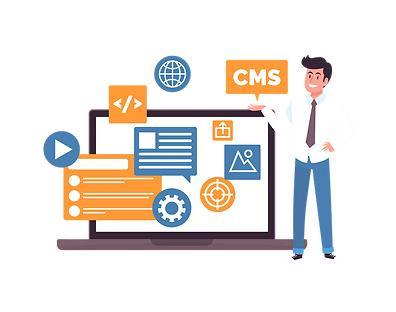
Custom software development involves creating software applications that are specifically designed to meet the unique needs and requirements of a particular business or organization. Unlike off-the-shelf software, custom solutions are tailored to fit the exact workflows, processes, and goals of the client.

Our Approach
Requirement Analysis
In-Depth Discovery – We conduct stakeholder interviews and workshops to fully understand your business goals, challenges, and technical needs.
Market & Competitor Research – Analyze industry trends and competitor solutions to identify opportunities for differentiation.
User-Centric Approach – Define user personas, journeys, and pain points to align the solution with your target audience.
Feasibility Assessment – Evaluate technical, budgetary, and timeline constraints to set realistic expectations.
Documentation & Validation – Create detailed requirement specifications (SRS) and validate them with your team before development.



Design and Prototyping
Wireframing & Mockups – We develop low-fidelity wireframes and high-fidelity UI mockups to outline structure, layout, and visual elements.
Interactive Prototypes – Create clickable prototypes to simulate user flows and gather feedback before development.
UX Research & Testing – Conduct usability tests and A/B testing to refine designs based on real user behavior.
Responsive Design – Ensure seamless adaptability across all devices (desktop, tablet, mobile).
Design Systems – Establish reusable UI components and style guides for brand consistency and faster development.
User-Friendly Interface
Intuitive Navigation - Simple, logically organized menus and breadcrumbs for effortless browsing.
Aesthetic Design - Visually appealing layouts with balanced color schemes, typography and whitespace.
Responsive Interactions - Touch-friendly elements and smooth animations for natural engagement.
Accessibility Focus - WCAG-compliant designs with proper contrast, alt text and keyboard navigation.
Personalized Experience - Adaptive interfaces that remember user preferences and behavior.


Content Management Systems (CMS)
User-Friendly Interface - Intuitive dashboards enable non-technical users to update content (no coding required) easily.
Multi-User Collaboration - Role-based permissions allow teams to work simultaneously with controlled access levels.
SEO Optimization Tools - Built-in features for metadata, alt tags, and clean URLs to boost search rankings.
Template Flexibility - Customizable themes and drag-and-drop builders to match brand identity.
Scalable Architecture - Plugins and extensions to add functionality as business needs grow
Integration Capabilities
Unified System Connectivity - Seamless integration with CRM (Salesforce, HubSpot), ERP (SAP, Oracle), payment gateways, and marketing platforms.
Real-Time Data Synchronization - Automated two-way data flow ensures consistency across all platforms.
Custom API Development - Tailored RESTful APIs and webhooks for bespoke integration needs.
Middleware Solutions - Leveraging platforms like MuleSoft and Zapier for complex ecosystem connections.
Legacy System Modernization - Bridging older systems with modern applications through adapter patterns

